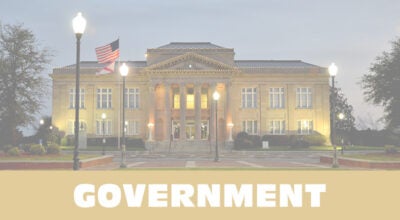State’s tourism, seafood business watch oil spill like storm
Published 12:07 am Thursday, April 29, 2010
MOBILE (AP) — It felt like hurricane season on the Alabama coast Wednesday, with both the tourism and seafood industries watching weather forecasts and tracking the movement of a massive oil slick that was threatening to slime beaches and bayous with a gooey mess.
The waves at Gulf Shores were frothy and white and fishing boats cut through Mobile Bay just like always, but no one was sure what the next few days might bring.
At a news conference Wednesday, Gov. Bob Riley ensured that Alabama emergency crews are working to protect the state from being sullied by the oil spill in the Gulf of Mexico — a potential “catastrophic event” for the coast.
He said much of the effort to block the spill would be begin Thursday.
The huge oil slick from a drilling rig that exploded and sank was about 20 miles east of the mouth of the Mississippi River and about 100 miles south of Mobile, but forecasts said changing conditions could bring it closer to land. There was no way to know when or where it might hit.
“It’s like a storm. No one really knows what it’s going to do next,” said Mike Foster of the Alabama Gulf Coast Convention and Visitors Bureau at Orange Beach. “So much of it is watching winds and currents and weather to see which way it turns.”
The economy of the northern Gulf Coast is still recovering from back-to-back strikes by hurricanes Ivan and Katrina, which together wiped out billions of dollars worth of homes, businesses and industries from the Florida Panhandle to Louisiana in 2004 and ’05.
Avery Bates, who has spent his life pulling oysters out of the coastal waters around Bayou La Batre, worried that an oil slick hitting the coast anywhere in the region could have a devastating impact on both the rebuilding seafood industry and tourism since the area is relatively small.
“It would be just be insult to injury. You’re trying to get your industry built back on the Gulf Coast, and now this?” Bates said.
Riley was in Mobile to meet with the U.S. Coast Guard and state agencies to discuss the slick’s latest movements and to review plans should the petroleum reach coastal Mobile or Baldwin counties. The Dauphin Island Sea Lab was sending out research vessels to monitor sea like and petroleum levels offshore.
Bates, the oysterman, said cleaning up after a spill would be daunting considering Alabama — with only two counties on the coast — has 600 miles of shoreline including bayous, beaches and tributary banks.
“It would be devastating to hundreds of businesses and thousands of jobs,” said Bates, vice president of the Organized Seafood Association, which represents Alabama’s seafood producers. “This is a major problem. I just got off the phone with a shrimper who said this would put him out of business if it happens.”





